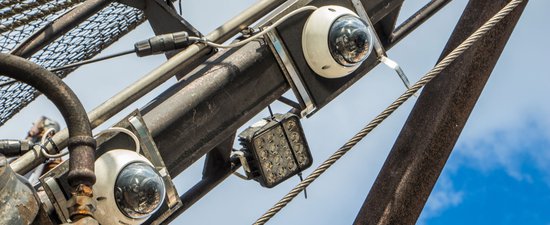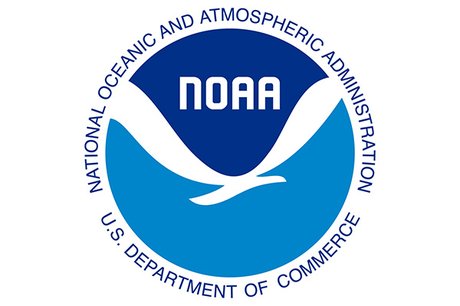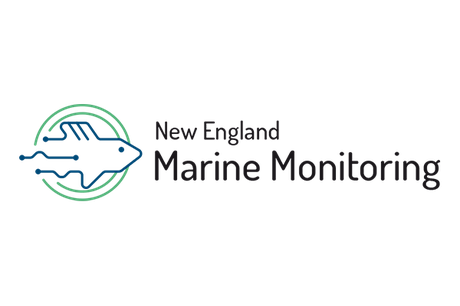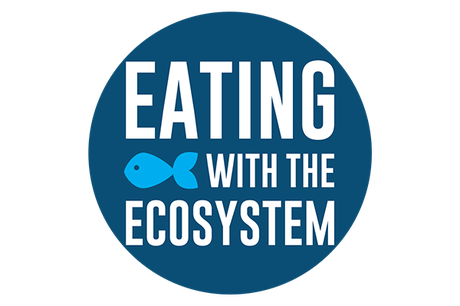Electronic Monitoring (EM)
Supporting fishermen with cost-cutting tools.
In an attempt to reduce the expense of at-sea monitoring, we are working with managers and fishermen to develop cost-effective alternatives. Electronic monitoring (EM) offers a way to significantly reduce the costs associated with at-sea monitors without compromising data quality or integrity. It has gained regional momentum, drawn national and international attention, and has proven to be a successful alternative in areas such as British Columbia’s groundfish fishery.
Project Goals:
- Support informed decision-making in the New England Fisheries Management Council and other regionally relevant decision-making bodies as they modernize fisheries and implement EM tools.
- Design, execute, and evaluate an accessible EM model for high-volume vessels in the groundfish fishery.
- Explore the potential of using EM data beyond fisheries monitoring, including in fisheries science and marketing.
- Provide technical assistance to sectors implementing Amendment 23 to the Northeast Multispecies fishery management plan.
The transition to sector management has placed increased monitoring and reporting requirements on individual vessels. At-sea monitoring uses onboard human observers to verify a vessel's catch, area fished, and discard rate. While the costs for this traditional approach were fully funded since sector creations in New England, the long-term plan is to transition these costs to the fishermen themselves. At an expected rate of up to $800 a day, these fees would place a significant burden on the already strained industry.
EM is an innovative and cost-effective alternative to at-sea monitoring. The technology improves the at-sea monitoring process the same way electronic tolls have improved highway traffic, as it provides an accurate, safer, and more cost-effective alternative to human observers.
This modernized process replaces the on-board human observer with a suite of video cameras, computers, gear sensors, and GPS to record information about a vessel’s fishing activity. The video footage is then reviewed onshore and can be used to collect data comparable to that collected by at-sea monitors. For example, managers can calculate catch and discard rates using species identification and fish length data captured by the video.
The Maximized Retention Model
In 2018, the Gulf of Maine Research Institute, with its partners, launched a Maximized Retention Electronic Monitoring (MREM) program, in which a dockside monitoring component run by the Northeast Fisheries Science Center works in tandem with an electronic monitoring component to provide a complete monitoring program of kept and discarded fish on vessels operating in the Northeast Multispecies Fishery.
The MREM model was designed to evaluate an electronic monitoring protocol feasible for large vessels in the Northeast Multispecies fishery and to ensure precise and accurate catch estimation while reducing regulatory discards and increasing efficiency and accountability in the fishery.
Instead of recording discards at sea, vessels in this program are exempt from minimum size requirements for allocated species, and all catch (both legal-and sublegal-sized) of allocated species are landed, documented through dealer reports, and verified by a dockside monitor. EM in this program is used as a means of documenting allocated species that may be discarded at sea, if any, to determine compliance with MREM protocols.
The Gulf of Maine Research Institute piloted this program from August 2018 through January 2023 under an exempted fishing permit issued by NOAA’s Greater Atlantic Regional Fisheries Office (GARFO). The intent of the pilot program was so it could be adopted as an operational electronic monitoring option. In January 2023, NOAA Fisheries approved and implemented Amendment 23 to the Northeast Multispecies Fishery Management Plan. The implementation of Amendment 23 authorizes sector vessels to use the MREM model, in place of human ASM, to satisfy the sector monitoring requirement and allows vessels the flexibility to choose the monitoring option that best meets their needs.
The Gulf of Maine Research Institute is now administering a third-party dockside monitoring program that will design and test innovations to the current NOAA-led dockside monitoring component of MREM. This work will allow for increased program efficiency and the scalability of a third-party dockside monitoring program that is cost-effective to support groundfish sectors, fishers, and offloaders. Through this program, the Gulf of Maine Research Institute is continuing to develop novel technology solutions to reduce the cost, logistic, and catch-handling burdens of electronic monitoring, making it more accessible for the Northeast Multispecies fishery.

Maximized Retention Electronic Monitoring in the Northeast Multispecies Groundfish Fishery
Year 1 Preliminary Report - September 20, 2019
Automation in Electronic Monitoring
Automation of visual imagery analysis has progressed at an amazing rate in the last decade. Many common tasks can now be fully automated, and automation is even used to enhance human performance of difficult tasks. As a result, many fisheries stakeholders in New England are actively pursuing machine learning as a solution to prohibitive human review, data transmission, and storage costs of video analysis. In an effort to advance the development automation in EM programs the Gulf of Maine Research Institute (GMRI) and its partners CVision AI and New England Marine Monitoring, hosted an electronic monitoring (EM) workshop entitled “Incorporating Machine Learning into Northeast EM programs” on January 23, 2020.
The goal of the workshop was to convene EM project stakeholders, AI specialists, NOAA staff, and data specialists to focus on the potential uses of machine learning in current and future programs, identify regional priorities, and begin to discuss the pathway for incorporating AI into video analysis. Learn more by exploring the workshop report (Integrated Machine Learning and Electronic Monitoring) or by watching a selection of presentations from the workshop.

Integrating Machine Learning and Electronic Monitoring
A Northeast Regional Workshop Report
To provide further support to groups progressing machine learning and automatic analysis, GMRI partnered with CVision AI to publish "Electronic Monitoring: Best Practices for Automation", a first-of-its-kind Electronic Monitoring guidance document that describes best practices for designing EM systems and programs suited for automated or semi-automated video analysis. This document presents a broad range of information for use as a guide to industry groups, governments, or EM vendors considering or currently developing automated EM programs, and provides technical detail for groups that have experience in automated EM programs and an interest in the lessons learned from New England.

Electronic Monitoring: Best Practices for Automation
Guidance document by Benjamin Woodward, Mark Hager, and Heather Cronin.
Exploring the use of EM data
Many fishermen believe that accurate catch data beyond estimates from sea sampling are necessary to set accurate and enforceable catch limits and have adopted electronic monitoring (EM) as a means of achieving data collection and accountability objectives. Currently, over 20 groundfish vessels participating in EM in the region are positioned to provide a wealth of information to the seafood supply chain, fisheries researchers, and consumers. GMRI has taken on multiple initiatives to utilize and establish the effectiveness of an electronic monitoring system as a cost-effective data-collection platform for fishermen to contribute to fisheries research and access marketing opportunities.
Capt. Jim Ford, a participant in the MREM project, in partnership with the Nature Conservancy, designed a modification to the Ultra-Low-opening-trawl (ULOT) in response to the economic pressure imposed by landing GoM Atlantic cod under a fully accountable monitoring program. By adding a mesh “cod-barrier” across the anterior opening, the modified ULOT is intended to improve selectivity and reduce unwanted catch of GoM Atlantic cod by blocking and guiding cod over the top of the headrope, while profitable flatfish pass through the meshes and are caught in the trawl close to the bottom.
GMRI is testing this gear modification on Capt. Ford’s vessel, using the on-board EM technology for the majority of data-collection, and demonstrating the power of EM tools to collect fisheries-dependent data for research. Additionally, GMRI curates an archive of thousands of Atlantic cod samples and has continued to add to this archive since the 1970’s. Data on cod are very important to New England fishermen because it is a choke species that limits the harvest of abundant stocks. Vessels participating in the Maximized Retention program provide a valuable opportunity to obtain fish samples through exempted sublegal-sized fish landings, and many fishermen in EM programs see this data as an opportunity to provide broad spatial and temporal information to the scientific community. Through increased partnership between researchers and EM vessels, we have been able to fill important data gaps in the archive, providing an opportunity for fishermen to directly advance our collective understanding of the Cod fishery.
In collaboration with Eating with the Ecosystem, we are testing methods for rapid information exchange between EM fishermen and consumers, with the goal of cultivating a retail marketplace that is quickly adaptable to variation in the supply of different local species. This project is generating awareness that motivates action among seafood consumers regarding the availability of fish species, and electronic monitoring tools and data provide a unique opportunity to transmit fishing video and generate market recommendations to New England consumers.
Project Lead
Read More
-
![Supporting Regional Fisheries]()
Supporting Regional Fisheries
Our Fisheries Technical Assistance Program (FTAP) provides a range of technical, convening and innovation services to New England’s commercial fishing industry to promote the long-term …
Perspectives
-
![Electronic Monitoring Expansion]()
Electronic Monitoring Expansion
To comply with federal regulations, fishermen in the Gulf of Maine are monitored by fisheries observers — people who ride along with fishermen to collect …
Perspectives
-
![Electric Monitoring Impact Growing]()
Electric Monitoring Impact Growing
To comply with federal regulations, fishermen in the Gulf of Maine are monitored by fisheries observers — people who ride along with fishermen to collect …
Tidings
-
![Exploring Electronic Monitoring for New England Groundfish Fishery]()
Exploring Electronic Monitoring for New England Groundfish Fishery
One of the most pressing challenges for New England’s groundfish fleet is the issue of at-sea monitoring. Federal regulations require onboard human observers to verify …
Announcements











